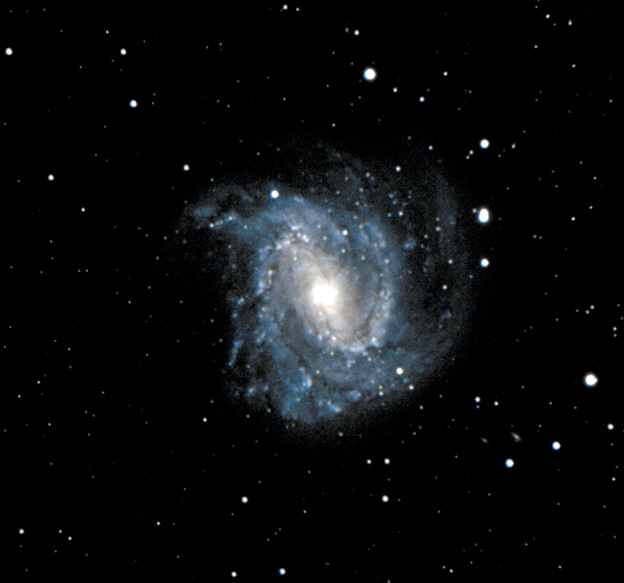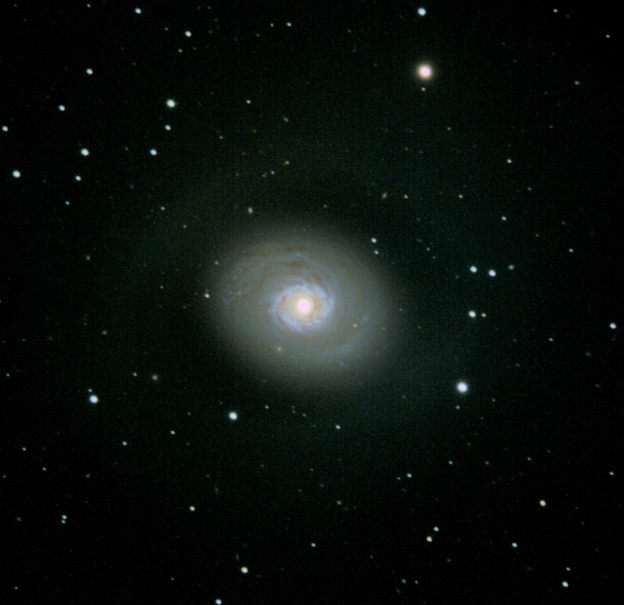The evening skies of May begin with the star Arcturus just above the eastern horizon.
With a visual magnitude of 0, Arcturus is the brightest star is the northern hemisphere and the fourth-brightest star in the night skies. South of Arcturus, you will see two bright objects: Jupiter is the brighter of the two with a magnitude -2.4 and higher in the sky, and Spica has a visual magnitude of +1.05 so it seems rather dim compared to Arcturus and Jupiter but it’s the 15th– brightest star in the night skies.
Supporter Spotlight
Jupiter was visible all night long on May 1 and will continue to be throughout most of May. Jupiter is a great target for viewing with the unaided eye, a pair of binoculars or a telescope. To the unaided eye, Jupiter looks like a very bright star. Add a good pair of binoculars and suddenly there is a disk that is easy to identify as a planet. If your binoculars are powerful enough, you might see the four Galilean moons: Io, Europa, Ganymede and Callisto. They are easy to see through a 5-inch telescope. Galileo discovered them in 1610, but that doesn’t mean you can’t enjoy re-discovering them for yourself.
Saturn will also be visible through much of May. On May 1, it rose about 11:15 p.m. and was visible for the rest of the night. By the end of the month, it will rise just after 9 p.m. Saturn is easy to spot with the unaided eye. With a visual magnitude of +0.1, it’s almost as bright as Arcturus.
Supporter Spotlight
If you want to see somebody get interested in the night sky, point out Saturn, then hand them a good set of binoculars or, better yet, let them look at the planet through a small telescope. Almost everyone smiles when they see those rings.
Mars will be visible near the western horizon just after sundown this month. Venus will be visible near the eastern horizon just before sunrise.
On the nights of May 5 and 6, this year’s Eta Aquarids meteor shower will be at its peak. The meteors will appear to originate near the eastern horizon. Peak viewing will be in the early morning.
The Hercules Cluster, or M13, can be observed just about every night this month. With a visual magnitude of +5.8, it can be viewed with the unaided eye on very clear, dark nights. If you take the time to head up on the beach or get away from city light pollution by driving to Ramp 27 on the Cape Hatteras National Seashore, about 4.5 miles south of Salvo, you will have a better chance of spotting it. You can locate the cluster by mentally drawing a line from Arcturus towards a very bright star to the northeast called Vega. The Hercules Cluster is about two-thirds the length of that line. It will be difficult to see without binoculars or a telescope. If you have the option of viewing M13 with binoculars or a telescope, you will be amazed at how spectacular it is.
Highlights for April

Messier 83, or M83, is also known as the Southern Pinwheel Galaxy. M83 is a relatively close, barred spiral galaxy. It’s only 16 million light-years away. With a visual magnitude of +7.15, you cannot see it with the unaided eye, but you can spot it with binoculars. The “bar” is the bright stripe of stars that goes across the center of the galaxy.
M83 was discovered in 1752 by Nicholas Louis de Lacaille. It was the third galaxy discovered. M31, or the Andromeda Galaxy, and its satellite, M32, were the only other galaxies known to man. Scientists estimate there are 40 billion stars in M83.
M94, like M83, is relatively close to Earth, too. M94 is only 14 million light-years away and, like M83, is believed to contain 40 billion stars. With a visual magnitude of +7.96, you can probably spot it using a good pair of binoculars, but you really need a telescope to define its unique structure.

M94 has a very bright core surrounded by an inner ring that some observers call the “starburst ring.” The starburst ring is believed to be an area of star formation. Surrounding the starburst ring is a second ring of young, blue star clusters. And finally, beyond that ring is a faint field of older, yellow stars.
For anyone who is curious about the “bright stars” that appear in the image of M94, they are more distant elliptical galaxies. The brighter one above and to the right of M94 is PGC 2180382. It’s a +16.3 magnitude galaxy that is 630 million light-years away. The fainter one just below and to the right of M94 is PGC 2177103. Its magnitude is +17.75 and it’s believed to be a billion light-years away.
Moon Phases
- First quarter: May 3
- Full moon: May 10
- Third quarter: May 19
- New moon: May 25







